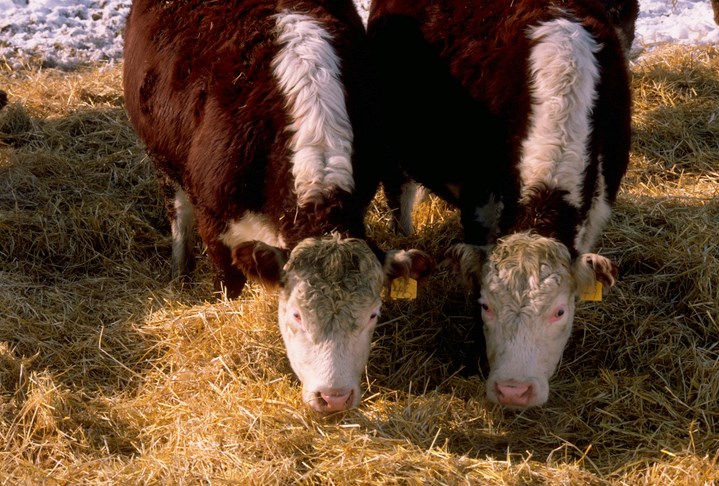Manitoba’s Hamiota Feedlot bills itself as having a capacity to background and finish more than 12,000 head on its custom operation. If the current feed shortages continue, it’ll likely need to use all that space this year.
“These guys are just moving their cows to just give them enough room to hold on to some of their other cows and some of their calf crop,” said Hamiota Feedlot owner Larry Schweitze. “The next thing that is going to go is those calf crops and there have been some good calf sales already and I guess we’re in the run all right.”
There are pockets where decent feed is being harvested but new crop barley is on the light side and questions remain about how much grain and corn will be made available, said Schweitze.
It’s a scenario that is playing out across Western Canada this summer, and Janice Tranberg, president of the National Cattle Feeders Association, said the drought will have lasting effects.
“It’s going to take some time for us to rebuild this industry back up. That’s the unfortunate thing.”
She said high feed costs coupled with lack of availability are going to see cattle inventories fall in both Canada and the United States.
Keeping the border open to transnational movement of cattle will be essential to allow Canadian feedlots to buy U.S. cows.
This year’s drought may result in larger feedlots getting bigger because they can capitalize on the economies of scale with feed being in such short supply, Tranberg added.
“I think it’ll be important for some of the smaller- and medium-sized feedlots to really focus on efficiency and really focus on niche markets. Diversify, that’s how everyone survives.”
Schweitze said that if predictions of a heavier-than-normal fall sale come to fruition, it will likely punch a hole in spring calf sales because light calves have been selling for decent prices now and there is no guarantee the high feed costs this winter can be recouped.
“If you’re going to feed these cattle with those type of grains you’re going to have to get a pretty good ticket at the end of the year just to break even,” he said.
“Is that going to change the feeder markets? Is that going to make them go down or is that going to make them go up? Because if they know they are going to make more money at the end of the day are they going to push harder to buy those calves to fit that market?”
Schweitze said the answer won’t be known until the full effect of this year’s fall run is realized.
In the short term, feedlot operators will need to pass on the higher feed costs to ranchers, said Will Lowe, president of the Saskatchewan Cattle Feeders Association.
Corn and barley feed prices will likely double, said Lowe, and there isn’t any straw and hay.
“In normal years past, we’re looking at a $1-per-pound of gain in the feedlot,” he said. “Now you’re looking in the neighbourhood of $1.50 to $1.60 a pound.”
Lowe expects capacity issues in the near term. But gains this year in the feedlot industry will be short-lived if herd reductions are steep, simply because there won’t be enough cattle inventory left.

